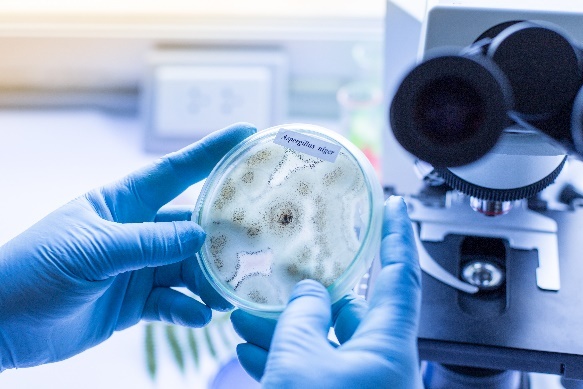
Industry Leading Services
MOLD TESTING
Initial mold testing can be useful in determining the extent of mold growth, air quality and source. An initial inspection can include air samples, bulk samples of growth, moisture, infrared and humidity as well as a visual inspection.
MOLD REMEDIATION
Mold remediation occurs when mold is present due to moisture in occupied structures. Mold is harmful and can adversely effect the health of occupants and workers where mold growth is present and left untreated.
MOLD CLEARANCE
Prior to the re-occupancy of any structure where mold remediation has been performed, clearance sampling is vital in ensuring all the mold has been properly remediated. RegasGroup can provide rapid on-site clearance utilizing state of the art equipment such as Mycometer to get you back in your home or place of work. Please check your current state and county laws to make sure you comply with any regulations or call RegasGroup to confer with a mold specialist.
About Mold
Molds are a natural part of the environment and can be found almost anywhere that moisture and oxygen are present. They belong to the kingdom Fungi and thrive in moist places such as soil, plants and dead or decaying matter. Outdoors, molds play a part in nature by breaking down dead organic matter such as fallen leaves, dead trees, and other debris; however, mold growth indoors is unhealthy and should be avoided.
There are many types of mold – all of them need water or moisture to grow. When excessive moisture accumulates in buildings or on building materials, mold growth often occurs, particularly if the moisture problem remains undiscovered or unaddressed. Mold growth can occur on, Wood, Paper, Carpet, Furniture, Paint, Foods, Insulation, and other organic materials. When mold spores land on damp spots or surfaces, they may begin growing indoors and digesting whatever they are growing on to survive. Eventually molds will destroy the things on which they grow.
There is always some mold around. Molds have been on the Earth for millions of years. Mold can get in your home through open doors, windows, vents, and heating and air conditioning systems. Mold in the air outside can be brought indoors on clothing, shoes, bags, and even pets.
Mold will grow where there is moisture, such as around leaks in roofs, windows, or pipes, or where there has been a flood. Mold grows on paper, cardboard, ceiling tiles, and wood. Mold can also grow in dust, paints, wallpaper, insulation, drywall, carpet, fabric, and upholstery.


Mold Health Effects
Molds are usually not a problem indoors unless mold spores land on a wet or damp spot and begin growing. Molds have the potential to cause health problems. Molds produce allergens (substances that can cause allergic reactions) and irritants. Inhaling or touching mold or mold spores may cause allergic reactions in sensitive individuals. Allergic responses include hay fever-type symptoms, such as sneezing, runny nose, red eyes, and skin rash.
Allergic reactions to mold are common. They can be immediate or delayed. Molds can also cause asthma attacks in people with asthma who are allergic to mold. In addition, mold exposure can irritate the eyes, skin, nose, throat, and lungs of both mold-allergic and non-allergic people. Symptoms other than the allergic and irritant types are not commonly reported as a result of inhaling mold. Research on mold and health effects is ongoing.
Mold can have various health effects, especially for individuals who are sensitive to it.
Stuffy nose | Sore throat | Coughing or wheezing | Burning eyes | Skin rash
Severe Reactions: Individuals with asthma or those who are allergic to mold may experience more severe symptoms. Infections: People with chronic lung disease or those who are immune compromised (e.g., due to certain medical conditions or treatments) are at risk of developing lung infections from mold exposure.
Industry Leading Difference
RegasGroup has changed the industry by providing same day inspections to keep your project moving forward. Call today to speak with an environmental consultant that can help answer your questions and get your job scheduled on your timeline.
Our same day results will give you one less thing to worry about. Utilizing our in-house NVLAP accredited lab MicroTest, RegasGroup is able to deliver same day results with peace of mind!
In order to move forward with your project, a full and concise report is imperative. RegasGroup will provide you with a detailed report ensuring you have the proper documentation to keep your project moving forward.
Utilizing laboratory trained and proficient environmental consultants, RegasGroup performs on-site clearances and post abatement verification for asbestos abatement. This allows for the abatement process to be completed in a timelier manner, allowing you or your contractor to access the site to start repairs immediately.
